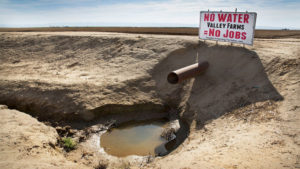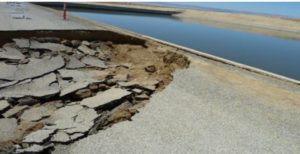SALMON TOUR OF THE SAN JOAQUIN RIVER–SIERRA TO THE SEA
November 2, 2017
I got my first-ever glimpse of the San Joaquin River on a salmon restoration tour this winter. It’s the second longest river in California and one of the most endangered rivers in the country! The San Joaquin River’s many stakeholders grouped together to discuss the roles and necessities needed to help salmon restoration efforts succeed. Representing the Bay Institute, I was thrilled to be part of this tour!
Alaska and the Pacific Northwest aren’t the only destinations for the five species of Pacific Salmon. The San Joaquin River in California was once teaming with salmon and other fish species migrating from the Pacific Ocean and the San Francisco Bay Watershed. Sadly, this important river, supporting over 80% of the world’s almonds, is now merely a ditch in many sections, with hardly any riparian trees left, after centuries of being engineered to death.
My only experience of the river has been quickly commuting past San Joaquin’s many agricultural canals through the Central Valley—heading out to Yosemite National Park or driving home for the holidays in Southern California from San Francisco. I have never taken the time to explore this river which traverses 300 miles from its Yosemite Basin headwaters in the Sierra to San Francisco Delta.
Several of my hard-core kayak friends have told me grueling stories of their experiences traversing the San Joaquin river—source to sea. So over-tapped and diverted that many parts of the river cease to flow. Considering obstacles like dams, canals and dry stretches, it’s surprising a kayaker can make it downstream, let alone a salmon making it upstream. But according to our salmon tour speakers, plans are in effect to help salmon return from the ocean to spawn in their natal river of origin.
Led by the Water Education Foundation and The Bay Institute, the salmon tour was both collaborative and educational. Farmers, conservationists, educators, policy-makers, and regulators alike, all jumped on a bus together to view various parts of the river—some highly contentious locations adjacent to almond farms, and other parts fully rehabilitated.
(..to be continued!)

Central Valley farmers coping with ongoing, severe droughts compete with salmon returning to their natal rivers to spawn.
